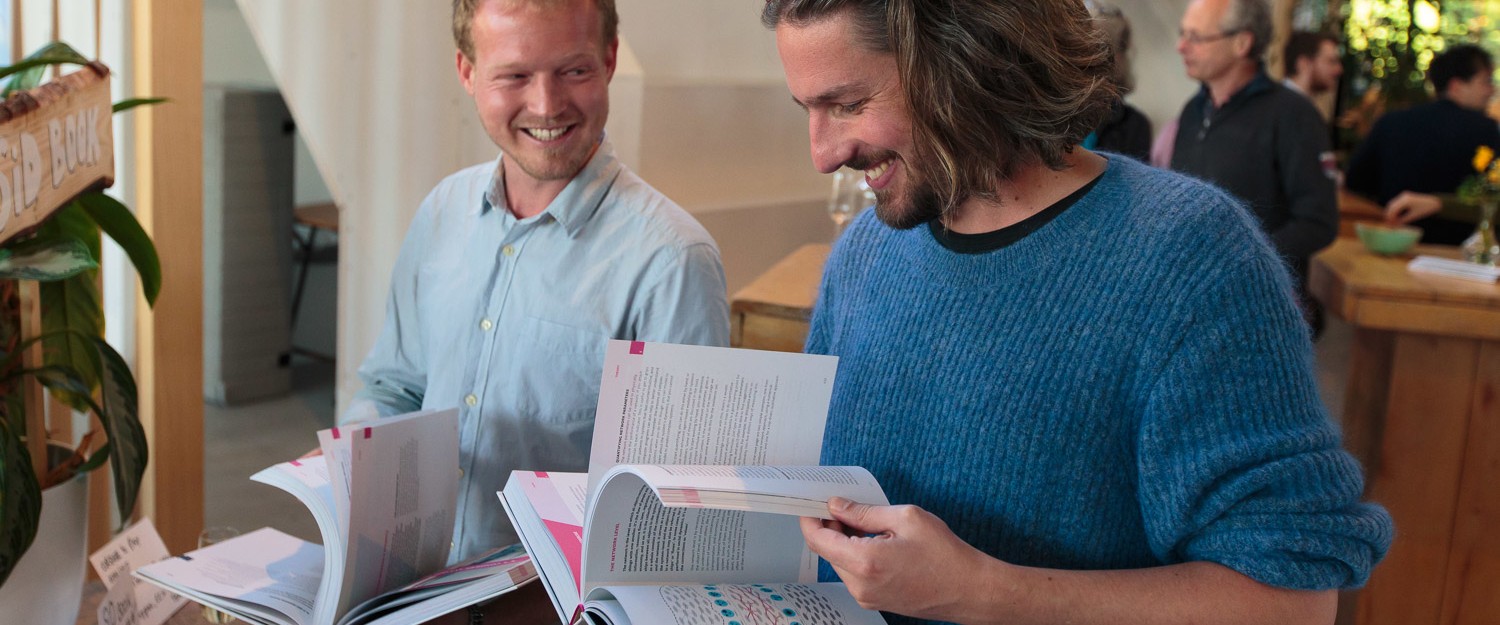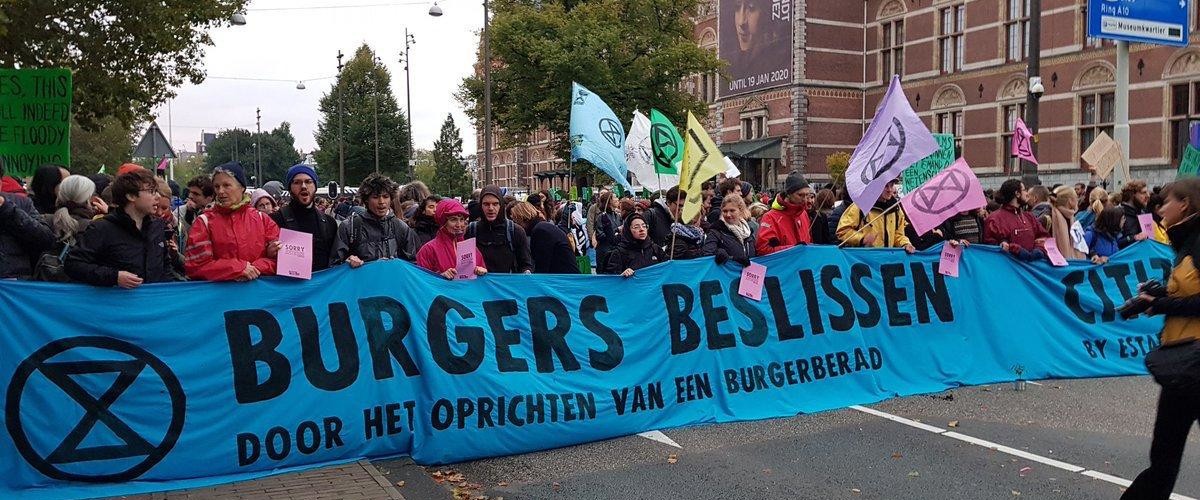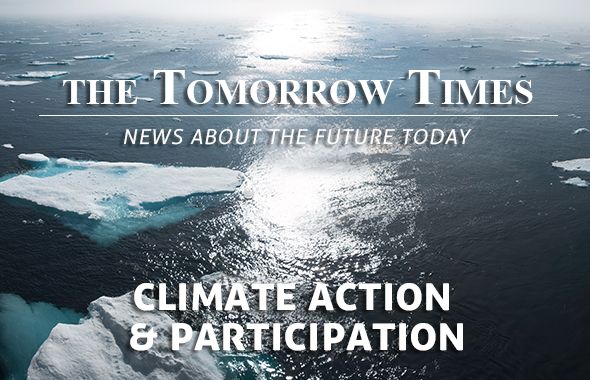The growing momentum of climate activism is driving massive global awareness on the urgency for fundamental, tangible system change. Governments and industries alike are urged to act, as their policies and practices are closely followed by an ever more aware public eye. This month, the Tomorrow Times investigates measures to think and act for a greater good.
In this edition, we join the discussion on the ever-rising global wave of climate activism. We acknowledge that reversal plans and actions to climate and social disruption require an adequate, well-organized human effort. This month, we dive into the aspects that influence public participation in the context of Climate Action (SDG 13). We do so with the special contribution from Roel Cremer, expert in organizational psychology, and co-founder of ‘ClimateMatters’.
"Rebuilding the foundation of society, changing the operations of multinationals, and altering the patterns of metropolis, are challenges we have never faced before. We have a choice. To simply not to try for lack of courage, as we proclaim it impossible, or to find reasonable ways to proceed. We are not without help. We have an increasing workforce, intelligence, knowledge and data, technology and insight on our side. And we have a growing awareness of the necessity for a new pathway.” - Tom Bosschaert, ‘ Symbiosis in Development’. From the new SiD Handbook. After 10 years of work, the first A to Z work manual for systemic sustainable development explains the foundations of all current movements.

Follow these periodical monthly updates of tomorrow’s sustainability news today, by subscribing to the Tomorrow Times.
Climate action and public participation
- Understanding systems as first step. 'The world is a complex, interconnected, finite, ecological-social-psychological-economic system’ (Donella Meadows, 2000). Varying from the highest level of the universe to the human cells, systems form a layered, interconnected structure. Systems seek for balance, not necessarily for our benefit, as we can see in the effects of climate change. Solving the planet’s biggest problems in the perspective of complexity was the key focus of the Systems Innovation Conference in London, last 7-8 September.
- Adaptation, mitigation, or transformation to climate change? We are familiar with the concepts of adaptation (to prepare for anticipated climate effects) and mitigation (reduce climate risk). Transformations refer to deeper ‘structural changes’ that address the root causes of the problem, and not just the consequences. International treaties like the Paris Agreement call for transformations that go beyond technical fixes. Main barriers lie in the political, personal and cultural sphere, deeply rooted in our social structures and beliefs.
- SDGs summit a reminder of ‘the boundless potential of humanity’. The first UN summit on the progress of the 2030 Agenda for Sustainable Development closed on a hopeful note, with Deputy Secretary-General Amina Mohammed declaring that the two-day event had been a reminder of ‘the boundless potential of humanity to create a better future for all’.
- The faces of an emerging global movement. As systems collapse, people rise. New global movements awakening across the planet. The Fridays For Future (FFF) movement inspired by Swedish teenager Greta Thunberg has brought millions of high school students to the streets this year. The grassroots climate activist group Extinction Rebellion (XR) founded in the UK last year aims to mobilize non-violent climate action worldwide. Sunrise, a youth-led movement, is advocating political action on climate change In the United States.

- ‘Global Climate Strike’ & bottom-up leadership. 20-27 September 2019, we saw a record 7.6 million people take to the streets and strike for climate action around the globe. The biggest climate mobilisation in history. Brands like Ben and Jerry’s, Lush Cosmetics, and Patagonia closed their stores and online sales, to express solidarity with strikers. Real leadership comes when people start questioning their own assumptions, why it has to be that way. People who are stepping forward, taking the lead are not perfect, not superheroes, but rather passionate believers, who lead transformations. See the example of the teen activist Greta Thunberg, at the 2019 UN Youth Climate Action Summit.
- Communicating climate change. In his renowned social learning theory, Albert Bandura (1925) promoted the concept of self-efficacy: individuals and groups are unlikely to attempt to act to solve a problem unless they have a belief - a perceived sense of efficacy - that their individual and collective actions can make a difference in tackling a problem. The message that recent climate strikes deliver is that people are empowered, seeking a change. How to channel this power effectively? In order to achieve ‘structural changes’, we need to design innovative solutions that meet people locally, where they are, using the power of emotional appeals and social incentives. Popular media, such as television, radio, and print, together with social media, are among the most important means of communication and outreach.
- Behavioural change, how much can it contribute? The recently published bestseller, ‘Drawdown: The Most Comprehensive Plan Ever Proposed to Reverse Global Warming’, describes the 80 most substantive existing solutions to address climate change mitigation. Many of the solutions identified exist at the level of the individual, changing patterns of human consumption, also called “behavioural wedges”. According to the book, individual behavioural change, when taken up by billions of people, can make a decisive difference, contributing to a potential reduction of emissions, between 20% and almost 40% by 2050.
Energy & Environment

- Climate change, a call for action. Big lifestyle changes are 'needed to cut emissions'. People must use less transport, eat less red meat and buy fewer clothes if the UK is to virtually halt greenhouse gas emissions by 2050, the government's chief environment scientist has warned. Prof Sir Ian Boyd said the public had little idea of the scale of the challenge from the so-called Net Zero emissions target. Learn about emerging solutions from the leading academics and researchers in climate change in this free course ‘Climate Action: Solutions for a Changing Planet’, launched on September 16.
- Climate measures which matter. While some actions offer great potential, some aren’t as effective as we think. Not all changes proposed in the name of climate mitigation are for the better, according to research from NTNU - Norwegian University. Poor decision-making which lacks systemic insight results in unexpected 'rebound effects': the reduction in expected gains, because of behavioural or other systemic responses. Additionally, climate action should avoid alarmism and be combined with other targets at a systemic level, as the ending of poverty.
- UN praises India for climate action. UN chief Antonio Guterres has said India is an important actor and "fundamental partner" in international efforts on climate action. Last month, India gifted 193 solar panels to the UN, in a symbolic gesture of its commitment to sustainability and climate action.
Business & Economy

- B Corp Summit in Amsterdam. B Corp is a global movement of people using business as a force for structural transition, balancing purpose and profit. We were present at the last B Corp Summit 2019, which brought together the movers and shakers of the new economy to learn from each other and work on tackling the biggest challenges of our time.
- Turning construction waste into the building blocks of the future. For centuries, builders and craftsmen have been reusing materials, whether it be wood, bricks or tiles. But now researchers in Spain and Italy are taking things a step further. The European project RE4 is developing new technological solutions and strategies for the development of prefabricated elements with a high degree of recycled materials and reused structures from demolished buildings. New materials from waste that would once have ended up in landfills.
- Recycling 2.0. An initiative by an initially small company - TerraCycle - has led more than 20 of the world’s biggest brands to begin testing reusable packaging. ‘Loop’, launched this year, has amassed a blue-chip roster of companies, all of which are piloting a new system of high-quality packaging, that can be returned and refilled again and again. In essence, it changes the ownership model of packaging from consumer to producer, giving out free shipping for customers to return empty packaging to the producers.
Science, Technology & Design

- The cars and trains of the future emit water steam. Germany unveils a zero-emissions train powered by hydrogen, Lower Saxony has already ordered 14 from French company Alstom, and more are likely to be seen around the country if they are judged a success. See also the Rasa, a special little hydrogen-powered fuel-cell car that pushes the boundary of engineering. Other new carbon-neutral fuels are under development, as fuel obtained by combining CO2 and electricity, developed by a team of researchers from Stanford University and DTU.
- Food from the future? Proteins from CO2. Lab-grown meat, insect protein and microbiomes are finding a firm position in the food market to help address ‘Zero hunger’ while replacing animal protein with more environmentally friendly alternatives. The Finnish Food Tech Start-up, Solar Foods, produces natural proteins from plain CO2, water and electricity, using fermentation processes similar to beer brewing to produce a unique single-cell protein called Solein. The first concept of Solein comes from a NASA space programme.
- U.S. optimizes school bus routes with an algorithm. In Boston the use of machine learning to improve school bus with the potential of bringing down their $120 million annual cost administration.
Urban Environment

- The United Nations grows urban forests in 30 countries. The UN plans to work with Britain's Kew Royal Botanic Gardens to grow forests in 90 cities across 30 countries in Africa and Asia. The United Nations unveiled plans to plant urban forests over an area four times the size of Hong Kong, seeking to make Africa and Asia's rapidly growing cities greener.
- The Dutch city of Zwolle - liveable and attractive blue-green solutions. The Zwolle Adaptation Strategy (video) actively involving local citizens to solve specific floods challenges as and co-create opportunities. The municipality is seeking cooperation with private parties and residents to strengthen blue-green infrastructures and give water more space in both the public and private domain.
- Australian resilient cities. The long-term planning strategy of the Victorian Government in Australia is building neighbourhoods where there is no need for cars. The aim is for everybody to be able to meet everyday needs locally within a 20-minute journey from home (by walking, cycling, riding or public transport). Melbourne’s first resilience strategy was endorsed by the City of Melbourne’s Future Melbourne Committee on May 2016. The result of the work of more than 1,000 individuals from 230 organisations, developed with the support of ‘100 Resilient Cities’ – pioneered by the Rockefeller Foundation.
Unexpected and Intriguing

- NASA footage of our “breathing” planet. Our planet is a living dynamic system so huge and complex that we are not able to fully grasp its existence with all the facets, ecosystems, landscapes that make up the whole. This footage from NASA reminds us how fragile our planet is and how much we impact. How will the “breathing” of our planet be in 2100?
- Can art be a solution to fires pollution? Amazing giant straw animals invade Japan’s fields after rice harvest. Could such an initiative be a solution to choking smog in Indian metropolis? Autumn in India is smog season, the worst time of year for some of the world’s most polluted cities. There’s a reason for this. In addition to everyday problems such as traffic, industry, domestic cooking and road dust, this is the time of year when farmers set fire to their post-harvest fields. It’s called “stubble burning”.
- Quality of the Dutch water at risk. Partly due to pollution with chemical substances, medicine residues and manure, according to a study by KWR, the knowledge institute for the drinking water sector.
- Photographer shows us our strange and lonely new world. Eric Pickersgill has created a series of photos to remind us of how lonely we are, albeit in the company of other people, when isolated in the virtual world of social media. In each portrait, electronic devices have been “edited out” from people who’d been using them.
14 oktober 2019


